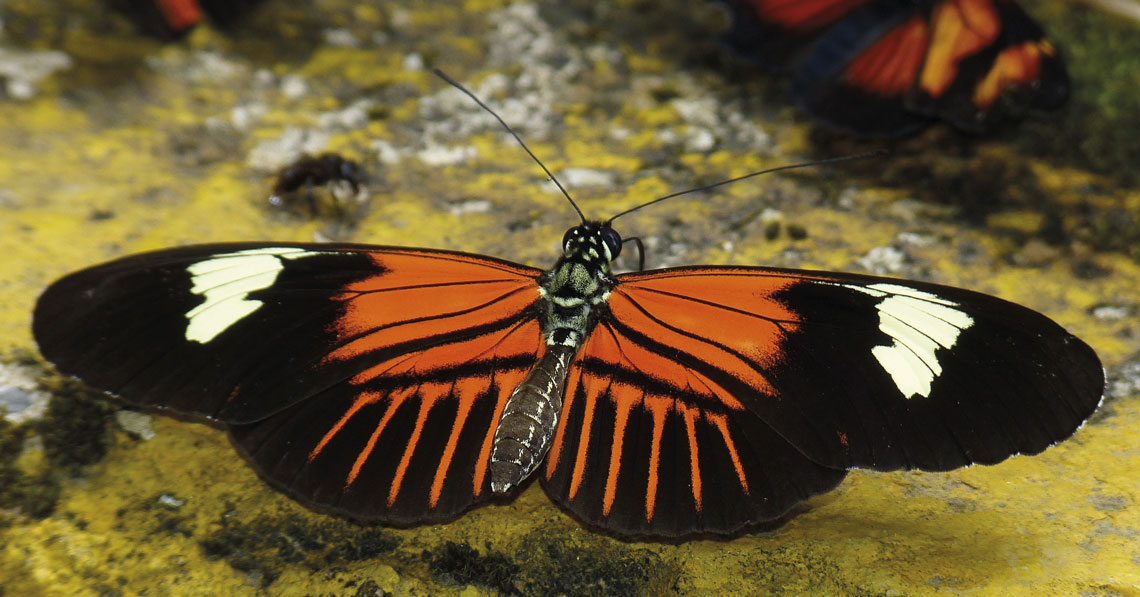
Andrew NeildHeliconius elevatusAndrew Neild
The butterfly Heliconius elevatus, native to the Amazon, is a hybrid H. melpomene and H. pardalinus, a crossing that occurred naturally around 180,000 years ago. The case is rare because hybridization usually leads to genetic dilution in the DNA of subsequent generations due to crossing back with one or both parental populations. Despite having resisted complete dilution, 99% of the DNA of H. elevatus is identical to that of H. pardalinus and just 1% matches H. melpomene. And it is this 1% that is responsible for the visual pattern on the wings that defines the butterfly’s appearance. The pattern offers a form of protection, warning predatory birds that the prey would taste bad. “This puts H. elevatus on a unique adaptive peak — it was what allowed the species to continue to exist,” explains biologist André Freitas of the University of Campinas (UNICAMP). The data was collected during an expedition to the Amazon that covered around 900 kilometers in three months, traveling from north to south along the highway that connects Manaus to Boa Vista (Nature, April 17).
Republish